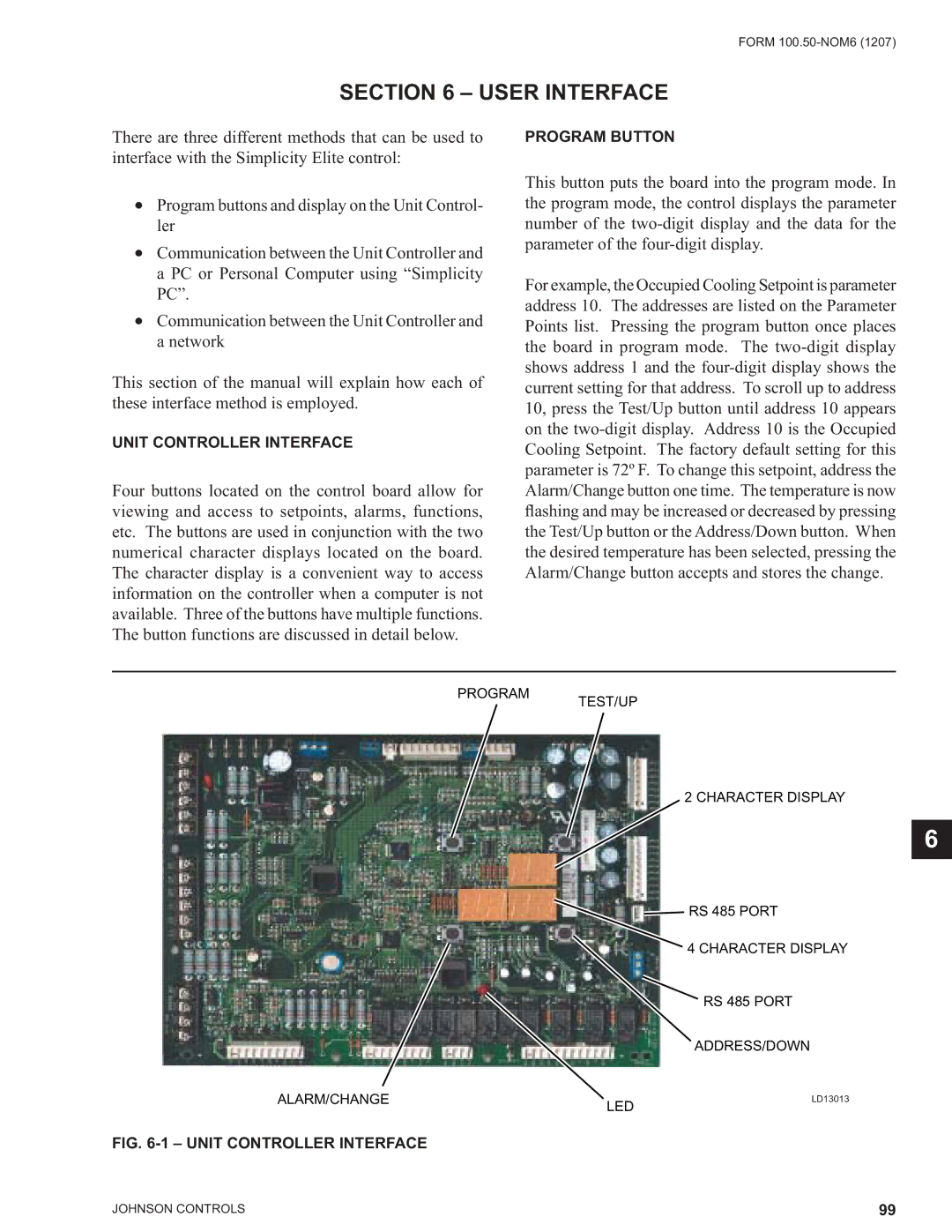
FORM
SECTION 6 – USER INTERFACE
There are three different methods that can be used to interface with the Simplicity Elite control:
•Program buttons and display on the Unit Control- ler
•Communication between the Unit Controller and a PC or Personal Computer using “Simplicity PC”.
•Communication between the Unit Controller and a network
This section of the manual will explain how each of these interface method is employed.
UNIT CONTROLLER INTERFACE
Four buttons located on the control board allow for viewing and access to setpoints, alarms, functions, etc. The buttons are used in conjunction with the two numerical character displays located on the board. The character display is a convenient way to access information on the controller when a computer is not available. Three of the buttons have multiple functions. The button functions are discussed in detail below.
PROGRAM BUTTON
This button puts the board into the program mode. In the program mode, the control displays the parameter number of the
For example, the Occupied Cooling Setpoint is parameter address 10. The addresses are listed on the Parameter Points list. Pressing the program button once places the board in program mode. The
PROGRAM
TEST/UP
2 CHARACTER DISPLAY
6
RS 485 PORT
4 CHARACTER DISPLAY
RS 485 PORT
ADDRESS/DOWN
ALARM/CHANGE | LED | LD13013 |
|
|
FIG. 6-1 – UNIT CONTROLLER INTERFACE
JOHNSON CONTROLS | 99 |
